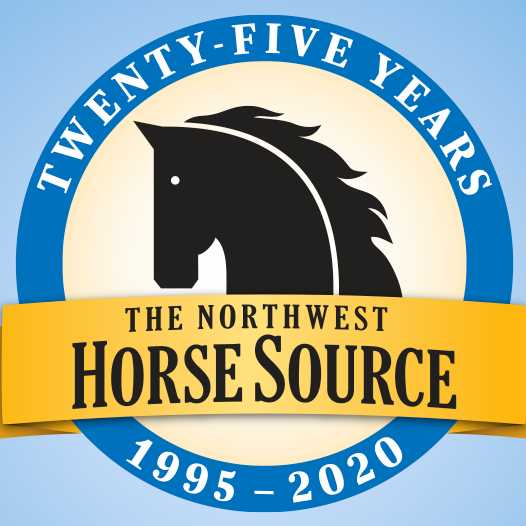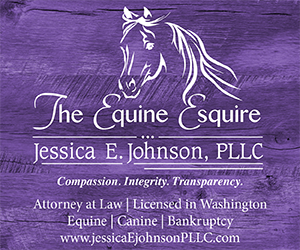Fecal Egg Count Tests Should be Used to Determine Your Deworming Strategy
More than 40 years ago, traditional parasite control programs were developed involving rotating dewormers with a number of different products at regular intervals. At that time, most horse owners were concerned about Strongylus vulgaris (large strongyle bloodworm).
S. vulgaris doesn’t occur very often, thanks to the traditional approach of rotational deworming. The two-month schedule associated with rotational deworming worked well on strongyle eggs, because it takes about that amount of time for reappearance after treatment.
While S. vulgaris is no longer a large threat, according to the American Association of Equine Practitioners (AAEP) Parasite Control Guidelines, horse owners should still take action against small strongyles (cyathostomins).1 In addition, tapeworms (Anoplocephala perfoliata) have been recognized as a potential cause of colic.1
If rotational deworming was so successful, why switch strategies now? Shouldn’t those same strategies work on other parasites? The answer, quite simply, is “no.”
“Calendar-based rotational deworming is an outdated practice,” says Hoyt Cheramie, DVM, equine specialist, Merial Large Animal Veterinary Services. “That’s because the life cycles and biology of small strongyles and tapeworms are different from large strongyles, and the rotational strategies designed for them aren’t as effective at controlling small strongyles and tapeworms.”
Four decades of rotational deworming has created resistance, which is the ability for worms to survive certain types of treatments.2
Small Strongyle Resistance2
| Dewormer (active ingredient) | Percent of farms with resistance |
| ZIMECTERIN® (ivermectin) | 0 percent |
| STRONGID®-P (pyrantel pamoate) | 40.5 percent |
| ANTHELCIDE (oxibendaxole) | 53.5 percent |
| PANACUR®/SAFE-GUARD® (fenbendazole) | 97.7 percent |
“What is needed are properly timed treatments with effective dewormers,” says Cheramie. He adds that the goal is not to completely eliminate all parasites in horses. The goal is to manage individual parasite loads to prevent health issues such as colic, weight loss and diarrhea. A secondary goal is to protect the pasture from being loaded with eggs and infecting other horses.
Fecal egg count (FEC) and fecal egg count reduction tests (FECRT) are the methods veterinarians use to determine a deworming schedule tailored to each horse while detecting resistance on farms.
“Fecal egg counts only test for strongyles; they don’t detect for tapeworms,” adds Cheramie. “AAEP recommends using a dewormer that contains an ingredient, such as praziquantel, that kills tapeworms at least once a year.”1
ZIMECTERIN® Gold (ivermectin/praziquantel) is approved to control more species and stages of equine parasites than any other equine dewormer, including those small strongyles (adults, including those resistant to some benzimidazole class compounds)..3
“A fecal egg count measures the number of strongyle eggs a horse is passing in each gram of its manure,” says Cheramie. “When you send a sample to your veterinarian, you will receive a number followed by EPG (eggs per gram), which will tell you whether your horse is a high, medium or low shedder.”
What those EPG numbers mean:4
Low shedders: 0-200 EPG
Moderate shedders: 200-500 EPG
High shedders: >500 EPG
If the horse is a low shedder, that particular horse has good natural immunity to strongyles and may not need to be dewormed as frequently. However, if the horse is a moderate or high shedder, that horse may need to be dewormed more often than other horses, even if the horse shows no signs of parasitism. This helps protect the pasture from being loaded with eggs.
Resistance is highly prevalent in small strongyles and should be factored into deworming decisions.3 “To test for resistance, after your first fecal egg count test, your veterinarian will have you deworm your horse and take a second fecal egg count two weeks later,” says Cheramie. “If the egg count number has not dropped significantly from the first test, then the worms on your farm are probably resistant to that dewormer’s active ingredient.”
To learn more about modern deworming practices, visit www.rethinkdeworming.com.
IMPORTANT SAFETY INFORMATION: Not for use in humans. Keep this and all drugs out of reach of children. In horses, there have been rare reports of swelling and irritation of the mouth, lips and tongue following administration of ZIMECTERIN Gold. These reactions have been transitory in nature. Do not use in other animal species as severe adverse reactions, including fatalities in dogs, may result.
IMPORTANT SAFETY INFORMATION: Not for use in humans. Keep this and all drugs out of reach of children. Do not use in other animal species as severe adverse reactions, including fatalities in dogs, may result.
About Merial
Merial is a world-leading, innovation-driven animal health company, providing a comprehensive range of products to enhance the health and well-being of a wide range of animals. Merial employs 6,100 people and operates in more than 150 countries worldwide with over €2 billion of sales in 2014.
Merial is a Sanofi company.
For more information, please see www.merial.com.
1AAEP Parasite Control Guidelines 2013, Accessed June 1, 2015. http://www.aaep.org/custdocs/
2Kaplan RM. Prevalence of anthelmintic-resistant cyathostomes on horse farms. J Am Vet Med Assoc. 2004;225(6)903-910.
3ZIMECTERIN Gold product label.
4Kaplan RM., Nielsen, MK. An evidence-based approach to equine parasite control: It ain’t the 60s anymore. Equine Vet Educ. 2010;22,306-316.

News from the horse industry. Sharing today’s information as it happens. The Northwest Horse Source is not responsible for the content of 3rd party submissions.






